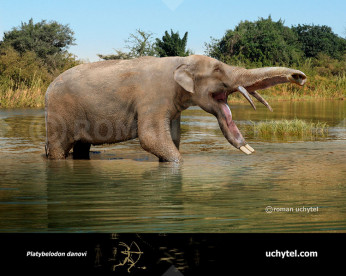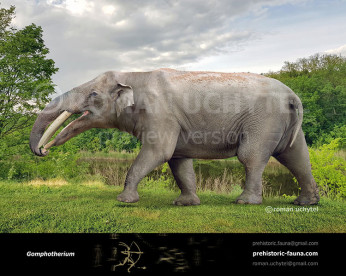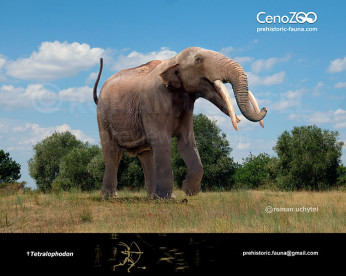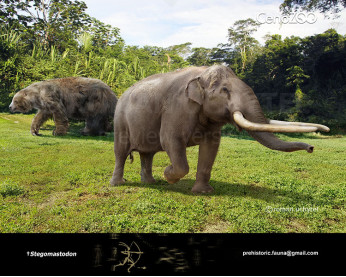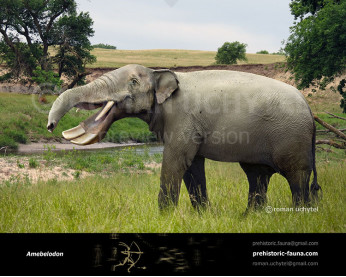Gnathabelodon
525525
Gnathabelodon (Gnathabelodon thorpei (Barbour and Sternberg - 1935))
Order: Proboscidea
Family: †Gomphotheriidae
Dimensions: length – 4,5 m, height – 2 -2,3 m, weight – 3200 -4500 kg
Temporal range: during the Miocene epoch of North America
In the past Gnathabelodon has been considered to be the same elephant as the closely related Gompotherium (the type genus of the Gomphotheriidae), though today Gnathabelodon is still usually treated as a distinct genus. It has been called the "spoon-billed mastodon" since its lower jaw was elongated and shaped like a shoe-horn or spoon.
Gnathabelodon is endemic to North America that includes species that lived during the Middle to Late Miocene.
The flaring of the tip of the lower jaw was similar to that of the "shovel-tuskers" (Platybelodon and Amebelodon); however, Gnathabelodon species are distinct in having no lower tusks whilst the "shovel tuskers" have broad, flattened lower tusks. With respect to dentition and overall body form, it was similar to species of Gomphotherium, but Mothe et al. (2016) recover Gnathabelodon as closer to brevirostrine gomphotheriids than to Gomphotherium.
Оплата
У Вас є кілька зручних способів купівлі зображення: кредитна чи дебетова картка Visa, Mastercard, Maestro; PayPal або банківський переказ
Gnathabelodon (Gnathabelodon thorpei (Barbour and Sternberg - 1935))
Order: Proboscidea
Family: †Gomphotheriidae
Dimensions: length – 4,5 m, height – 2 -2,3 m, weight – 3200 -4500 kg
Temporal range: during the Miocene epoch of North America
In the past Gnathabelodon has been considered to be the same elephant as the closely related Gompotherium (the type genus of the Gomphotheriidae), though today Gnathabelodon is still usually treated as a distinct genus. It has been called the "spoon-billed mastodon" since its lower jaw was elongated and shaped like a shoe-horn or spoon.
Gnathabelodon is endemic to North America that includes species that lived during the Middle to Late Miocene.
The flaring of the tip of the lower jaw was similar to that of the "shovel-tuskers" (Platybelodon and Amebelodon); however, Gnathabelodon species are distinct in having no lower tusks whilst the "shovel tuskers" have broad, flattened lower tusks. With respect to dentition and overall body form, it was similar to species of Gomphotherium, but Mothe et al. (2016) recover Gnathabelodon as closer to brevirostrine gomphotheriids than to Gomphotherium.

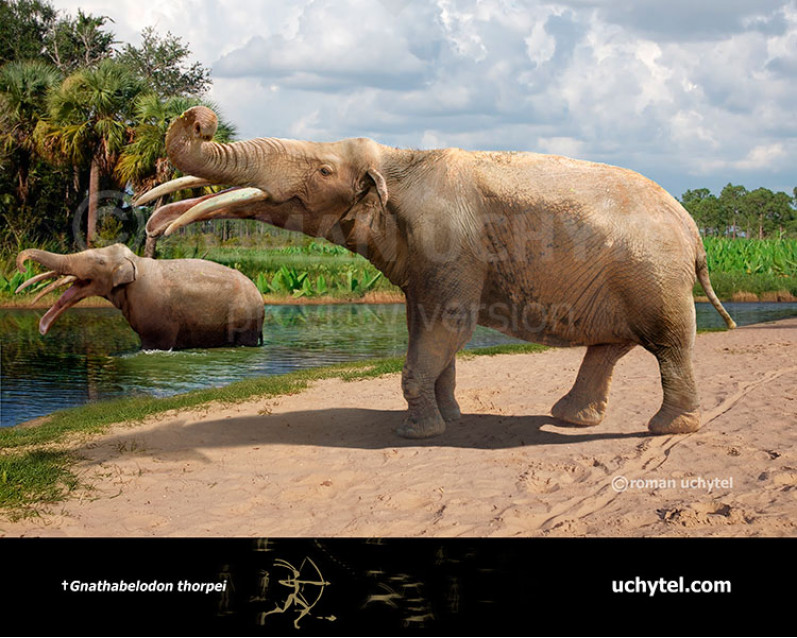
-797x638.jpg)

-70x56.jpg)
